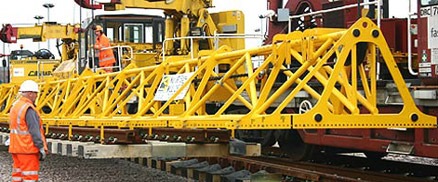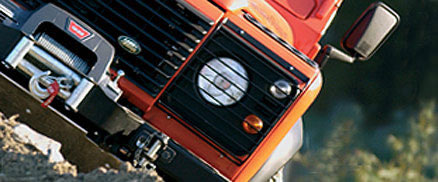June 7th, 2011
If you are planning to use height safety equipment then you need to know the basics to ensure that you are not putting yourself or your staff in danger and that you are following all health and safety regulations.
So what are the different types of height safety equipment? Follow this quick guide to learn about the types of equipment you may encounter.
Fixed Permanent Ladders
Although moveable ladders can be used in construction and other industries to reach the heights of a building, it is often better in terms of safety and efficiency to have fixed permanent ladders installed. They are permanently attached to a building or structure making access to roofs and other higher areas a lot easier and more convenient. This makes building repairs and maintenance a lot easier. As the ladder is fixed it remains steady during ascent and descent making it safer to use. With particularly high ladders often feature a safety cage at the top.
Roof Hand Rails
Roof hand rails are often installed on the roofs of tall buildings to create a safer environment for workers as they provide something to grab onto when carrying out repair works on roofs. Most buildings of a certain height are now required to have hand rails installed on the roof.
Fall Arrestors
As the name suggests these pieces of equipment are designed to arrest a fall if it should happen. The equipment is intended to stop a fall from disabling or killing someone should an accident occur. People working at height are more vulnerable to accidents and any accident that does occur can be much more harmful and sometimes fatal. This is why fall arresting safety equipment must be used at all times when working at height. This is not only a sensible safety measure but also a requirement of the law. If you are working at height or have employees working at height you must ensure that all your height safety equipment meets the health and safety requirements laid out by the law.
Lanyards
These are flexible ropes, cords and wires worn on the body. They are intended to hold an object and keep it in sight. For example when working at heights the worker will need to keep tools and equipment close by them to avoid having to travel up and down a ladder several times. In addition the use of Lanyards ensure that if workers lose their grip on their tools at any time they will not fall to the ground and injure anyone passing below.
Tags: eqipment hire, fall arrestors, height safety, lanyards, roof hand rails
Posted in Arbil Lifting Gear |
June 7th, 2011
If you are new to off roading then you probably have lots of questions about the activity. Although it’s a hugely exciting activity there are certain measures that need to be taken in order to remain safe and to keep your vehicle in tip top condition.
Have a look at some of these frequently asked questions to discover if you are following the off roading rules.
Should I follow a winch maintenance schedule?
The quick answer to this question is yes. Many winches are designed to be maintenance free but there are still several things you can do to make the lifetime of your winch longer.
- Check the wire rope for kinks and flat spots after every use.
- Rinse your winch after every off roading session, but don’t use a jet wash as this can cause damage.
- Power the rope all the way out and then all the way in. Performing this action will dissipate any moisture that might have got into the winch and will also heat up the drum and the motor.
- Get your winch inspected once a year to ensure that it is still working correctly.
- You can use electric or hydraulic winches.
- The maximum load that a winch can take is rated by the first layer of drum performance. Each subsequent layer reduces the capacity by 25%. The amount of force also depends on the angle of pull.
- Most winches undergo rigorous safety testing but you should check for this before you purchase.
- It is possible to fit a winch yourself however it is a far more sensible option to have it fitted by a professional.
What about Safari Snorkels?
- It’s recommended to have your snorkel fitted by a professional. This usually takes around two hours.
- Even in the strongest of tropical storms only a tiny amount of moisture can find its way down a safari snorkel.
- Fitting a Safari Snorkel will not obscure driver vision in any way.
- Safari Snorkel’s are made from a special type of plastic called UV stable cross linked polythene
- Fitting a Safari Snorkel will not change and may even improve your fuel consumption
What are the differences between batteries?
- Deep cycle batteries perform differently to normal batteries. Many batteries that are used for 4×4 vehicles are designed to produce maximum power for a short time.
- A deep cycle battery can be used for engine starting.
- Many batteries can be charged with a solar charger or trickle charger.
For more off roading tips visit www.arbil4×4.co.uk
Tags: off roading, off roading equipment, off roading questions
Posted in Arbil 4x4 |
June 7th, 2011
Everyone wants to be a careful driver and keep themselves and those around them safe on the road. In recent times many of us have become far more conscious about road safety and for the majority of us things like drinking and driving would be completely unthinkable. Many drivers take regular breaks to ward off tiredness and due to the growth of the speed camera most of us avoid travelling at fast speeds. However, many drivers are less conscious about rail safety.
However as cities and towns grow roads are constantly changing, which means the addition of new road signs and markings. In conjunction with this, road features which used to be more commonplace, such as railway crossings, are becoming rarer. Because of this people are often confused when they do come upon a railway crossing and are often not entirely sure what they should do in this situation.
As so many drivers are unfamiliar with railway crossings it can mean that a lot of unnecessary accidents occur. The first thing driver need to take into consideration is that railway crossings could crop up unannounced on long country roads, so be aware of your surroundings and keep alert as to what is ahead of you.
If you see a railway crossing or a sign for one up ahead check to see if there is a car behind you. Do not break suddenly and give yourself enough time to come to a controlled stop. This will avoid a rear end collision but also greatly reduce the chances of you being pushed onto the tracks by the car behind you in the event of a collision. You should try to stop about 5 metres away from the tracks where possible.
This is not only safer because it avoids the possibility of your car being pushed onto the tracks by another vehicle, but also wards against any rocks or debris thrown up by the passing train hitting your windscreen and causing a chip or a crack.
If there is no train approaching and the barriers which stop you from crossing the tracks are up then it is safe to cross. You should do this in a low gear and at a steady pace which will help prevent the possibility of your vehicle stalling on the tracks.
If you follow these tips then you should avoid any danger at railway crossings. Remember, the gap between you encountering a railway crossing may be years apart but if you remember these pointers and drive sensibly you can easily avoid any accidents when you do come across a railway crossing.
Tags: rail safety, railway crossings
Posted in Arbil Rail |


